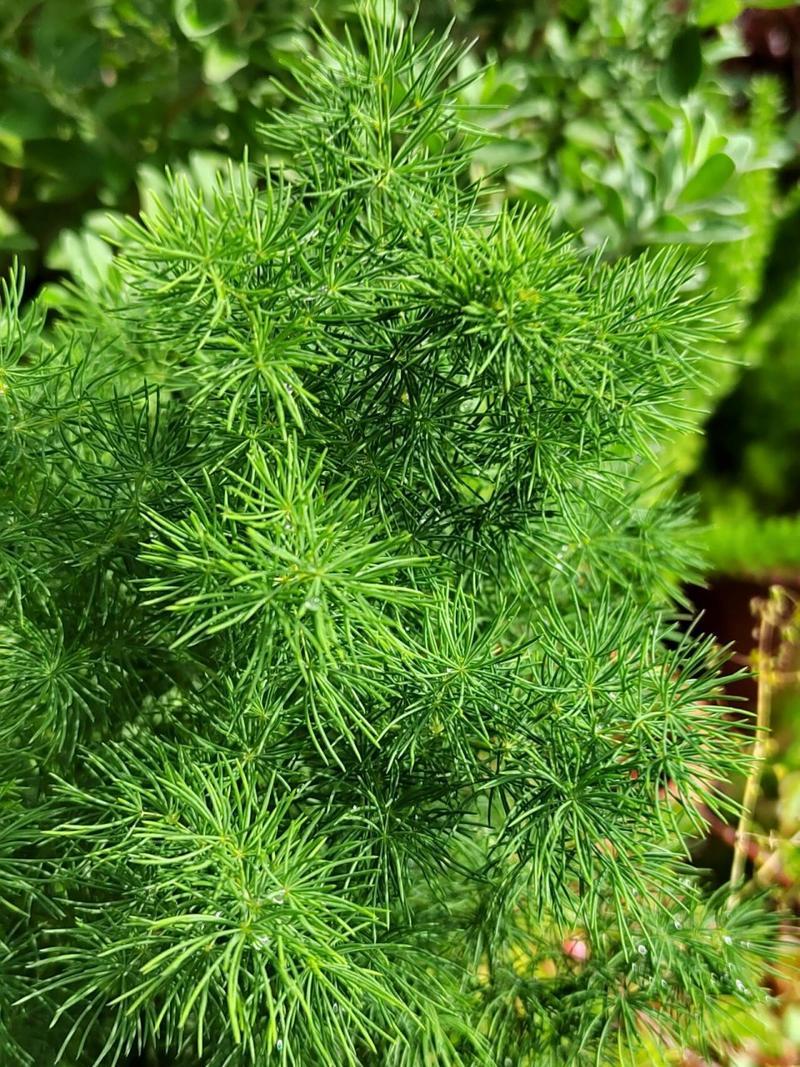Asparagus myriocladus seed
 Asparagus myriocladus is an elegant and ornamental species in the Asparagaceae family. Native to regions of southern Africa, this plant is valued for its fine, feathery foliage and is often mistaken for a type of fern due to its delicate appearance. Like other members of the Asparagus genus, it is not a true fern but a perennial herb with modified stems called cladodes that resemble leaves.
Asparagus myriocladus is an elegant and ornamental species in the Asparagaceae family. Native to regions of southern Africa, this plant is valued for its fine, feathery foliage and is often mistaken for a type of fern due to its delicate appearance. Like other members of the Asparagus genus, it is not a true fern but a perennial herb with modified stems called cladodes that resemble leaves.
Asparagus myriocladus: Uses, Benefits, and Botanical Significance
Botanical Description
- Growth Habit: A low-growing, bushy perennial with dense, finely divided green stems.
- Cladodes: Soft, needle-like structures that give the plant a fern-like texture.
- Roots: Thick and tuberous, helping the plant store water and nutrients.
- Flowers and Fruits: Tiny, white or pale flowers may appear in favorable conditions, followed by small berries.
- Habitat: Thrives in semi-shaded areas with well-drained soil and is drought-tolerant once established.
Main Uses and Applications
- Ornamental and Landscaping Use
- Indoor Decoration: Asparagus myriocladus is widely used as an indoor ornamental plant due to its lush green texture and graceful appearance. It thrives in pots, hanging baskets, or as a tabletop display.
- Terrarium Planting: Its compact size and humidity tolerance make it a favorite for terrariums and dish gardens.
- Garden Landscaping: Used as ground cover or a low hedge in subtropical and tropical gardens, especially in shaded areas.
- Floristry and Decorative Use
- The plant’s fine-textured stems are popular in floral arrangements, especially as filler greens. It adds softness and volume to bouquets and is often used in wedding decorations and event centerpieces.
- Ecological Benefits
- As a hardy and drought-tolerant plant, it is useful in water-wise gardening and xeriscaping, especially in areas prone to dry conditions.
- Its dense growth can help suppress weeds and retain soil moisture in shaded garden areas.
Traditional and Medicinal Use
While Asparagus officinalis (the edible asparagus) and Asparagus racemosus (used in Ayurveda) are better known for medicinal use, Asparagus myriocladus is occasionally used in local folk practices:
- In traditional South African medicine, related asparagus species are sometimes used for their diuretic and detoxifying properties, though formal studies on A. myriocladus specifically are limited.
- The roots are sometimes thought to support kidney health or general tonic effects, but this should be approached with caution as not all Asparagus species are safe for internal use.
Care and Maintenance
- Light: Prefers bright, indirect light or partial shade.
- Watering: Requires moderate watering; allow soil to dry slightly between waterings.
- Temperature: Prefers warm, humid conditions but can tolerate short periods of dryness.
- Pruning: Regular trimming helps maintain shape and encourages dense growth.
Safety and Caution
- Mild Toxicity: The berries of Asparagus myriocladus are not edible and may cause mild toxicity if ingested by humans or pets. Keep out of reach of children and animals.
- Skin Irritation: Some people may experience skin irritation from prolonged contact with the plant’s sap.
Conclusion
Asparagus myriocladus is a graceful, versatile plant admired for its fine foliage and easy-care nature. Whether used for interior decoration, garden landscaping, or floral design, it offers both beauty and resilience. While its medicinal applications are limited and not well-documented, it plays a valuable role in sustainable gardening and ornamental horticulture.
